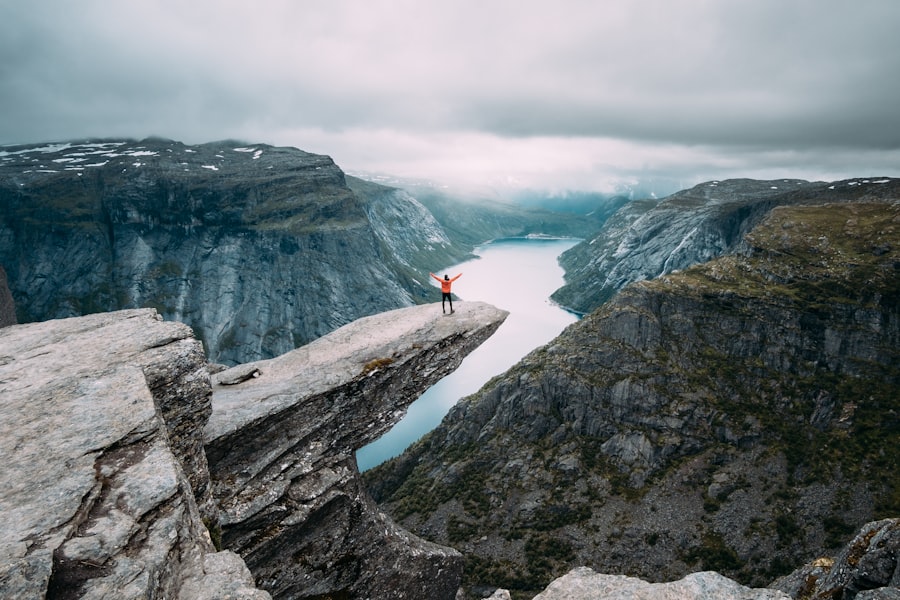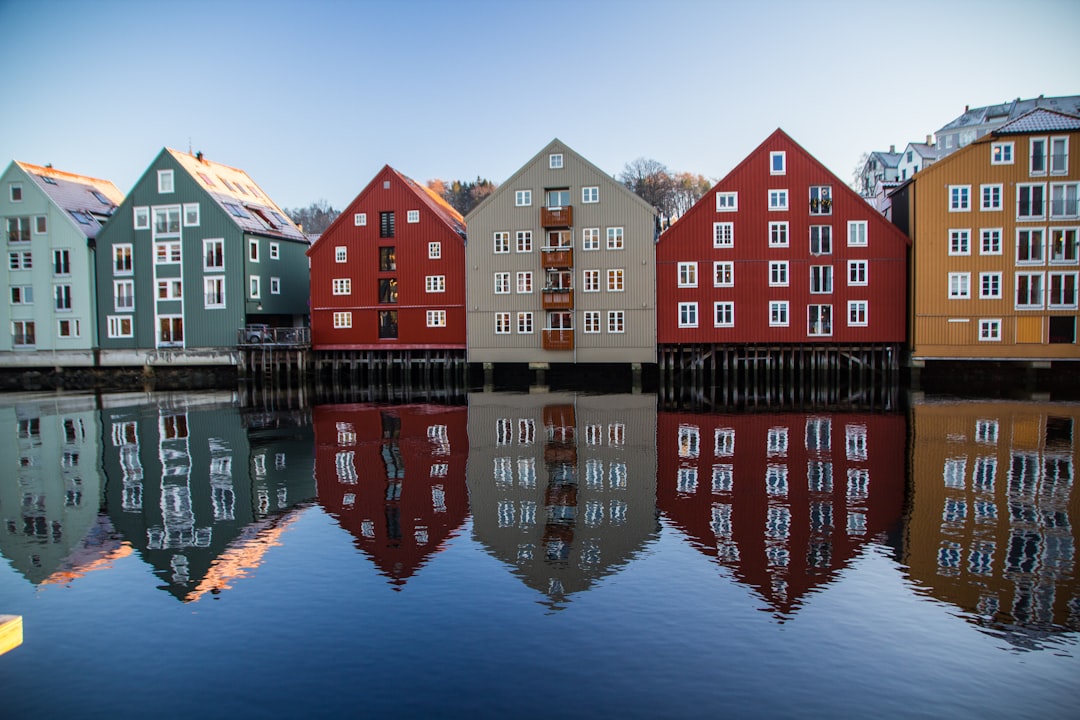Driving through the picturesque landscapes of rural Norway can be a breathtaking experience, but it also comes with its own set of challenges, particularly when it comes to wildlife. The country is home to a diverse range of animals, from majestic moose to nimble deer, all of which can pose significant risks to motorists. The vast expanses of forests and open fields create an environment where wildlife frequently crosses roads, often with little warning.
This unpredictability can lead to dangerous situations, especially for those unfamiliar with the area or the behaviour of its inhabitants. The risks associated with wildlife on the road are not to be underestimated. Collisions with large animals can result in severe damage to vehicles and, more importantly, can lead to serious injuries or fatalities for drivers and passengers.
In Norway, statistics indicate that wildlife-related accidents are a common occurrence, particularly during dawn and dusk when animals are most active. Understanding these risks is crucial for anyone planning to drive in rural areas, as it allows for better preparation and a more cautious approach to navigating the roads. Book your 1-hour strategy session with Norway Relocation Group.
Summary
- Wildlife on the road in rural Norway poses significant risks to drivers and the environment.
- Tips for avoiding wildlife collisions on Norwegian roads include driving at a safe speed and being aware of common wildlife hazards.
- Recognising common wildlife hazards on Norwegian roads is crucial for preventing collisions and ensuring safety.
- Driving at a safe speed in rural Norway is of utmost importance to reduce the risk of wildlife encounters and collisions.
- Reacting to wildlife encounters while driving in Norway requires staying calm and taking appropriate measures to avoid collisions.
Tips for Avoiding Wildlife Collisions on Norwegian Roads
To minimise the risk of wildlife collisions while driving in rural Norway, there are several practical tips that motorists can follow. Firstly, it is essential to remain vigilant and attentive at all times. This means keeping an eye out for any signs of wildlife near the road, such as tracks or droppings, and being particularly cautious in areas where wildlife crossings are indicated by road signs.
Additionally, reducing speed in these zones can significantly increase reaction time should an animal suddenly appear. Another effective strategy is to use high beams when driving at night, as this can enhance visibility and help spot animals before they enter the roadway. However, it is important to dim headlights when approaching other vehicles to avoid blinding them.
Furthermore, maintaining a safe distance from the vehicle in front can provide additional time to react if an animal unexpectedly crosses the road. By adopting these practices, drivers can significantly reduce their chances of encountering wildlife-related accidents.
Recognising Common Wildlife Hazards on Norwegian Roads

In Norway, certain species are more frequently involved in road collisions than others. The moose, for instance, is one of the largest animals found in the region and poses a considerable threat due to its size and weight. A collision with a moose can be catastrophic, not only for the animal but also for the vehicle and its occupants.
Other common wildlife hazards include deer, elk, and even smaller creatures like foxes and hares. Each of these animals has its own patterns of movement and behaviour that drivers should be aware of. Understanding the habits of these animals can aid in recognising potential hazards on the road.
For example, moose are often seen near water sources or during their migration periods in autumn and spring. Similarly, deer tend to be more active during twilight hours. By familiarising oneself with these patterns, drivers can anticipate where wildlife may be present and adjust their driving accordingly.
This knowledge is invaluable for ensuring safety while traversing Norway’s rural roads.
The Importance of Driving at a Safe Speed in Rural Norway
One of the most critical factors in preventing wildlife collisions is maintaining a safe speed while driving. In rural areas where wildlife is prevalent, speed limits may be lower than those found in urban settings for good reason. Driving at a reduced speed not only allows for better reaction times but also provides drivers with more opportunities to spot animals before they enter the roadway.
It is essential to adhere to posted speed limits and adjust speed according to road conditions and visibility. Moreover, driving at a safe speed contributes to overall road safety beyond just wildlife encounters. It allows for greater control of the vehicle and reduces the severity of accidents should they occur.
In rural Norway, where roads may be winding or poorly lit, taking extra care by slowing down can make all the difference in ensuring a safe journey for both drivers and wildlife alike.
How to React to Wildlife Encounters While Driving in Norway
Despite taking precautions, there may still be instances where drivers encounter wildlife unexpectedly on the road. In such situations, knowing how to react can be crucial. The first instinct may be to swerve to avoid an animal; however, this can often lead to losing control of the vehicle or colliding with another object or vehicle.
Instead, it is advisable to brake firmly but remain in your lane if possible. This approach helps maintain control while reducing the risk of a more severe accident. If a collision is unavoidable, it is important to brace for impact and try to minimise harm by steering straight rather than swerving.
After the incident, drivers should pull over safely and assess the situation. If the animal is injured or if there are injuries to passengers or other vehicles involved, it is essential to contact local authorities for assistance. Understanding how to react appropriately can help mitigate the consequences of wildlife encounters on Norwegian roads.
Understanding Wildlife Crossings and How to Navigate Them Safely

Wildlife crossings are designated areas where animals are encouraged to cross roads safely, often equipped with fencing or overpasses designed specifically for this purpose. These crossings play a vital role in reducing wildlife-vehicle collisions by providing safe passage for animals while guiding them away from busy roadways. As a driver in rural Norway, being aware of these crossings is essential for ensuring both your safety and that of local wildlife.
When approaching a wildlife crossing, it is crucial to reduce speed and remain alert for any signs of movement. Many crossings are marked with specific signage indicating their presence; therefore, paying attention to these warnings can help prepare drivers for potential animal activity in the area. By navigating these crossings with caution and respect for wildlife, drivers contribute to safer roads for everyone.
The Role of Road Signs and Warning Systems in Preventing Wildlife Collisions
Road signs play an integral role in alerting drivers to potential wildlife hazards along Norwegian roads. These signs often feature images of specific animals known to frequent certain areas and serve as a reminder for motorists to remain vigilant. In addition to traditional signage, some regions have implemented electronic warning systems that activate when animals are detected nearby, providing real-time alerts to approaching drivers.
Understanding and heeding these warnings is essential for preventing accidents involving wildlife. Drivers should always be prepared for unexpected animal crossings when passing through areas marked by such signs. By remaining attentive and responsive to these indicators, motorists can significantly reduce their risk of collisions while contributing to a safer environment for both themselves and local wildlife.
The Benefits of Driving with Extra Caution in Wildlife Areas
Driving with extra caution in wildlife areas not only enhances personal safety but also fosters a greater sense of responsibility towards the environment and its inhabitants. By adopting a more mindful approach behind the wheel, drivers can help protect vulnerable species from unnecessary harm while also ensuring their own well-being on the road. This heightened awareness encourages a culture of respect for nature that benefits everyone.
Moreover, exercising caution while driving through wildlife-rich regions can lead to a more enjoyable experience overall. The opportunity to observe animals in their natural habitat can be a rewarding aspect of travelling through rural Norway. By prioritising safety and being considerate of wildlife, drivers can create memorable experiences that celebrate the beauty of Norway’s landscapes while minimising risks associated with wildlife encounters.
The Impact of Wildlife Collisions on Norwegian Wildlife and the Environment
Wildlife collisions have far-reaching consequences that extend beyond immediate damage to vehicles and injuries sustained by humans. These incidents can have detrimental effects on local ecosystems and animal populations as well. For instance, when large mammals like moose are involved in collisions, it not only impacts their individual lives but also disrupts breeding patterns and population dynamics within their species.
Furthermore, frequent collisions can lead to increased mortality rates among vulnerable species, potentially threatening their survival in certain areas. This creates an imbalance within ecosystems that rely on healthy populations of various species for stability. Understanding the broader implications of wildlife collisions highlights the importance of taking proactive measures to prevent such incidents from occurring.
Resources for Reporting Wildlife Collisions and Seeking Assistance
In the unfortunate event of a wildlife collision while driving in Norway, knowing how to report the incident is crucial for both personal safety and environmental conservation efforts. Drivers should contact local authorities or emergency services immediately after an accident involving wildlife. This ensures that any injured animals receive prompt attention while also allowing authorities to monitor collision hotspots for future prevention measures.
Additionally, various organisations dedicated to wildlife conservation may provide resources for reporting incidents or seeking assistance regarding injured animals found on roadways. Engaging with these organisations not only aids in addressing immediate concerns but also contributes valuable data that can inform future initiatives aimed at reducing wildlife collisions across Norway.
The Future of Wildlife Safety on Norwegian Roads: Initiatives and Solutions
As awareness grows regarding the risks associated with wildlife on Norwegian roads, various initiatives are being developed to enhance safety measures for both drivers and animals alike. These solutions range from improved signage and educational campaigns aimed at raising awareness among motorists to innovative technologies designed to detect animal movements near roadways. One promising development includes the installation of wildlife detection systems that use sensors or cameras to alert drivers when animals are nearby.
Additionally, ongoing research into animal behaviour patterns helps inform road design and infrastructure improvements that prioritise safe crossings for wildlife. By investing in these initiatives, Norway aims not only to reduce accidents but also to foster coexistence between humans and nature. In conclusion, understanding the risks associated with wildlife on rural Norwegian roads is essential for ensuring safety while driving through this stunning landscape.
By adopting proactive measures such as remaining vigilant, adhering to speed limits, and respecting wildlife crossings, motorists can significantly reduce their chances of encountering dangerous situations involving animals on the road. Furthermore, engaging with local resources and initiatives aimed at promoting wildlife safety contributes positively towards preserving Norway’s rich biodiversity for future generations. For those looking to immerse themselves further into Norwegian culture while navigating these beautiful landscapes safely, consider enrolling in Norwegian courses at the NLS Norwegian Language School in Oslo.
Not only will you gain valuable language skills that enhance your travel experience, but you will also develop a deeper understanding of local customs and practices that promote safety on the roads—making your journey through Norway all the more enriching!
Speak Norwegian with confidence. Enroll in a class at the NLS Norwegian Language School now.

